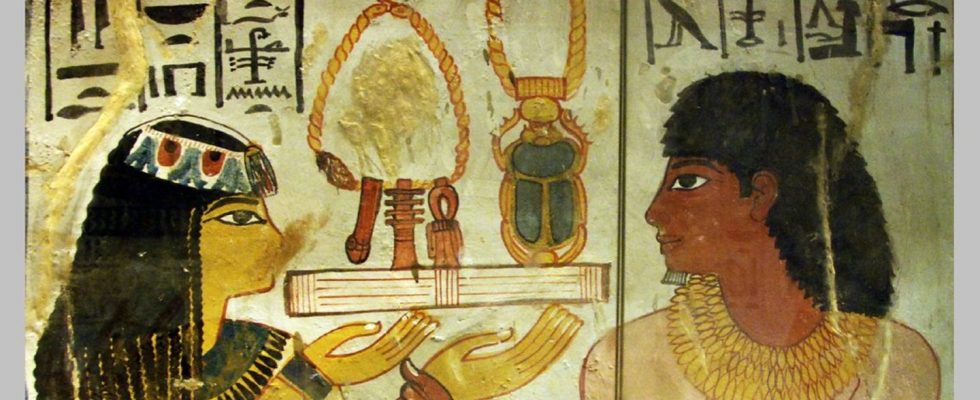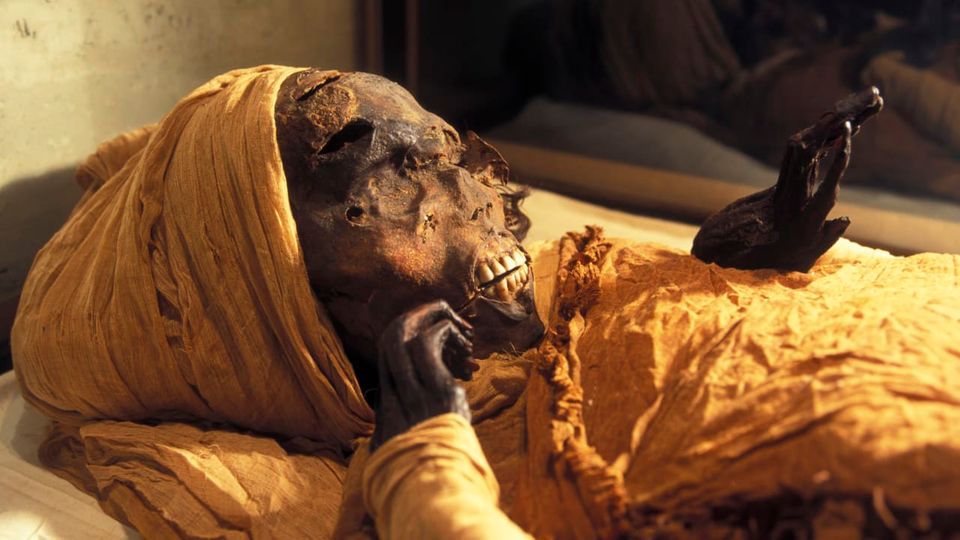Old Egypt
The “Scent of Eternity”: Balm of an Egyptian Mummy has been recreated
Senetny and her husband Sennefer
© Commons
Senetnay was the pharaoh’s nurse. Her mummy has been prepared for eternity with a scented balm. Researchers managed to decode it and remix it. For today’s noses, it is disturbing.
Museum visitors can now smell the scent used by the Egyptian noblewoman Senetnay in 1450 BC. for her life in the eternity rubbed in. Researchers were able to recreate a balm made from oils, resins and beeswax that was used to treat her mummy.
The bandage wraps used in mummification are well known, and smells also play a major role. Presumably because the fragrance should represent a counterpoint to the transience of the flesh. Written testimonies are rare, but now the ingredients could be determined and the balm remixed.
Woman from the entourage of the pharaoh
Senetnay belonged to the absolute upper class, most of the ingredients come from distant countries and not from Egypt. “Senetnay’s mummification balm is considered one of the most complicated and complex balms from this period,” says Barbara Huber, first author of the study from the Max Planck Institute for Geoanthropology.
Howard Carter discovered the vessels in which the organs removed from the dead were kept in 1900. He later became famous for discovering Tutankhamun’s tomb. Now, for the first time, six samples of residues of the balm have been decoded.
Well-travelled ingredients
The remedy consisted of a complex mixture of ingredients. These include fats and oils, beeswax, bitumen, pine resins, benzoic acid and coumarin, a substance with a vanilla-like scent.
“Certain resins, such as the resin of the larch tree, probably come from the northern Mediterranean region and Central Europe,” says Huber. “Another substance has been narrowed down to either a resin called dammar – found exclusively in Southeast Asian tropical forests – or to pistacia tree sap. If it was dammar, this would indicate the extensive trading networks of the Egyptians in the mid-second millennium B.C. highlight the ingredients that brought in from afar.”
Buried in the Valley of the Kings, Senetnay was entitled to be called the “Pharaoh’s Ornament” and was the nurse of Amenhotep II and wife of the mayor of Thebes.
Amenhotep II ruled Egypt for more than 25 years. He fought successfully in numerous wars and was known for his handsome appearance. Amenhotep II is the first depiction of a “sportsman,” someone who trains and runs for fitness. Amenhotep II allowed Senetnay to be buried in the Valley of the Kings. In the temple of Karnak he erected a statue of the couple.
Disturbing scents from Egypt
Her scent was recreated in collaboration with a perfumer. The remedy is used for the first time at an exhibition in the Moesgaard Museum in Denmark. dr William Tullett, an expert on sensory history, told the Guardian that visitors are in for a surprise. Because the Egyptians perceived the scents very differently than we do today. “To our nostrils, the warm, resinous, and pine-like scents of larch might be more reminiscent of cleaning supplies, and the sulphurous smell of bitumen might remind us of asphalt. But for the Egyptians, these smells clearly had a variety of other meanings related to spirituality and social status. “
Sources: Scientific Reports, Guardians




